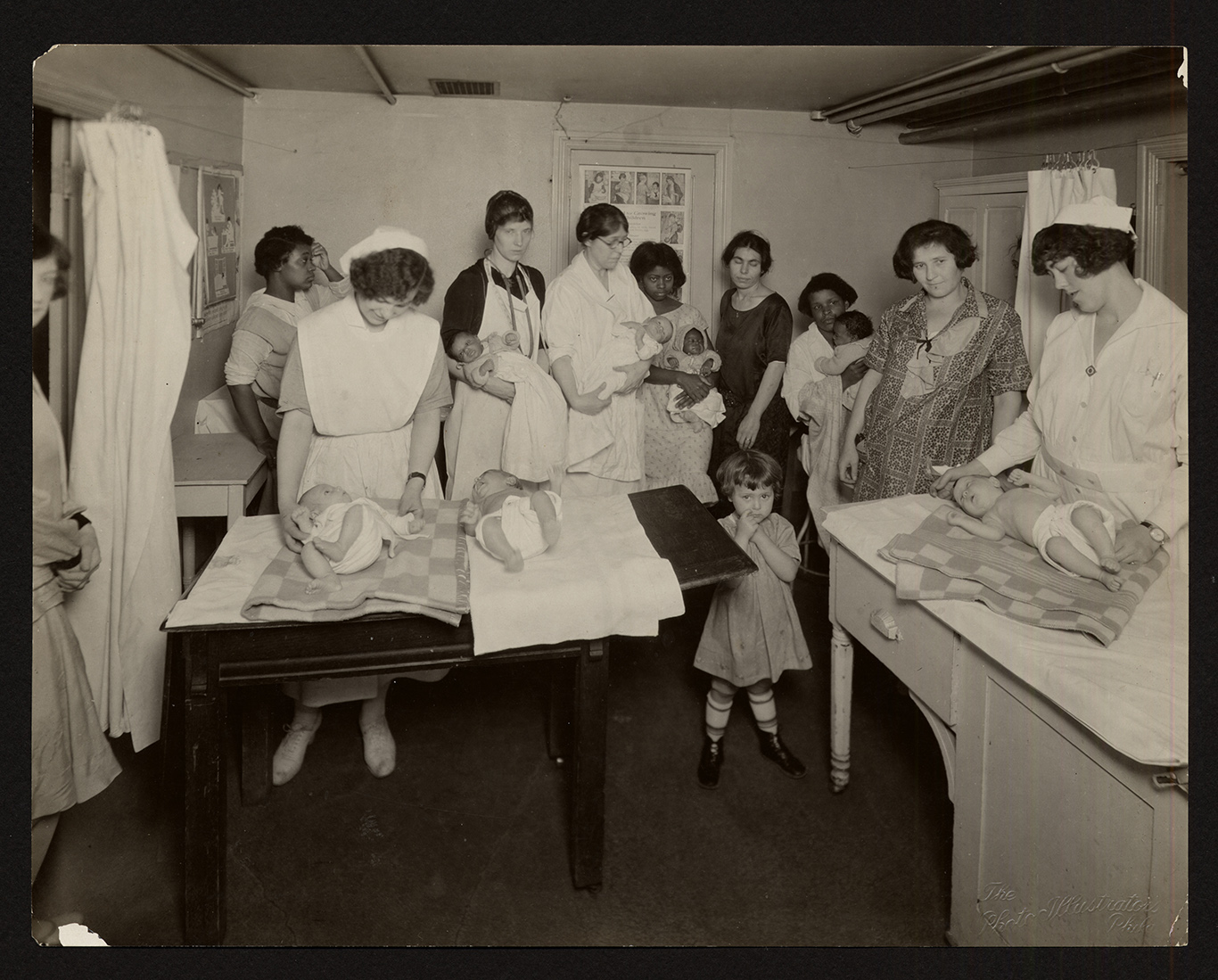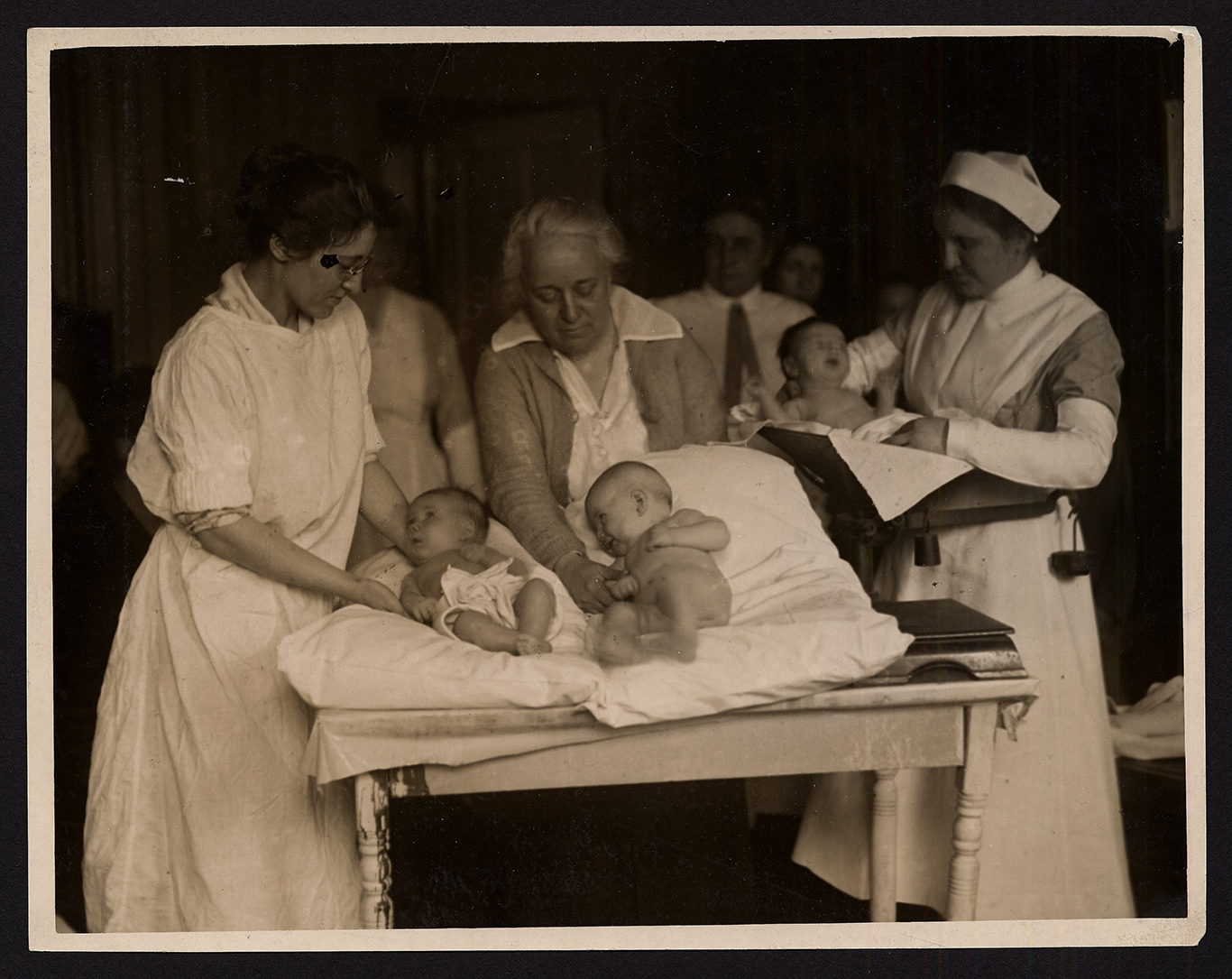
The COVID-19 pandemic will likely remain a defining event of 2020 for decades to come. In fact, COVID-19 may even be viewed similarly to how we, in the present day, view the 1918 Spanish influenza pandemic.
As a university in the heart of a highly populated city like Philadelphia, Drexel faculty and students have been readily involved in efforts to assist with the pandemic both then and now.
Back in 1918, the Women’s Medical College of Pennsylvania served in the frontlines of the pandemic. The WMCP was a predecessor to Drexel’s current day College of Medicine, serving as the first medical school in the world for women. Around the time of the pandemic, WMCP’s staff had been greatly reduced and spread thin across the war front due to World War I, according to an article by Ari McManus in the archives of the College of Medicine. The capabilities of these women, both students and staff, would soon be put to the test during the influenza outbreak in Philadelphia.
On Sept. 18, 1918, WMCP received its first case of influenza, followed by another case on Sept. 21. Shortly after the infamous Liberty Loan parade, cases began piling up, and the WMCP attempted to increase capacity by clearing up rooms for new patients. By October, things started to look grim as space was running out and the small amount of staff present were falling sick. Classes were canceled from Sept. 30 to Oct. 22 as the college deliberated how to deal with the large influx of patients while also ensuring students were receiving a proper education. Given the hospital staff shortages, students rose to the occasion to volunteer.
Medical students and volunteers from different backgrounds offered their assistance despite not necessarily being trained in the areas where help was needed. As one report from 1919 indicates, “It would have been impossible to carry the volume of work which presented had it not been for the splendid cooperation of our medical students, our newly entered probation class in nursing, our nurses’ aides, trained last year in our wards, and last, but by no means least, the splendid body of volunteers… No hospital was ever so fortunate in the response of women to its need!”
Although students were not necessarily trained in the areas where help was needed, they offered their assistance regardless.
“To the first-year students belongs the credit for keeping the College machinery running, which they did faithfully, even resisting the inroads of the influenza germ….There was rejoicing in all classes when it was possible to return to our normal academic life late in October,” an unknown author wrote in a December edition of the Bulletin of WMCP.
The Dean of WMCP, Martha Tracy, also acknowledged the assistance students provided in an alumni meeting one year following the pandemic. “During the epidemic the Freshman class of thirty students… stood by to give assistance or relief to the first line whenever it was asked,” Tracy said in another edition of the Bulletin.
Mary Buchanan, a WMCP professor, hospital staff member and president of the Alumni Association even stated once in the Bulletin: “The scarcity of doctors and the dearth of nurses threw an awful burden on those left in civil life. The acts of heroism of some of our women doctors will never be known, but the devotion to duty while those nearest and dearest to them were dying and dead, too far away for them to reach them, was worthy of an epic I am unable to write.”
As facilities were overflowing, this cooperation among WMCP medical students, volunteers, and other colleges or hospitals was an important component of dealing with the 1918 pandemic. Nearly one century later, and members of the Drexel community have demonstrated similar acts of public service and community with the COVID-19 pandemic.
Just as the Women’s Medical College of Pennsylvania had a prompt response to the national health crisis, Drexel members exemplified some of the same qualities again with the emergence of the new pandemic. This time, of course, Drexel has evolved into a much larger university, and with it, more resources, students and responsibilities.

When the COVID-19 pandemic was in full motion in the Philadelphia region, the associate dean of nursing and student affairs, Kymberlee Montgomery, and assistant clinical professor, Kimberly McClellan, answered the call to take charge of the university’s tracing and testing efforts. These testing efforts translated into the university testing centers operated by student health coops and volunteers from the professional health schools of Drexel.
Thanks to these successful testing initiatives, the university could plan initiatives to successfully bring some first-year students back to the dorms, as the planning by Vice Provost for Community Health Care Innovation and Director of Return to Campus Operations Marla Gold and her team was put into action. “The World Health Organization wants a positivity rate of below 5 percent. And, to date, Drexel has consistently maintained a positivity rate of under 2 percent,” Gold said.
The university also has had other notable contributions to the COVID-19 pandemic effort. Drexel is known to be a premier research institution and that has been one of its major offerings in this pandemic, compared to the one in 1918.
During the first few months of the pandemic, the one development Drexel underwent that opened the opportunity for other COVID-19 developments stemmed from the “Drexel University Rapid Response Research and Development Funding” program. This was emergency funding curated by the administration of Drexel to award promising inventions and progress that would mitigate the COVID-19. This would give quick funding to these series of projects all led by Drexel students and faculty around the pandemic.
This funding not only reached the medical implications of the COVID-19 pandemic, but also the implications in other disciplines such as economics or supply chain. From the development of rapid on-site testing kits for asymptomatic individuals, to the refining of the majorly flawed supply chaining of personal protective equipment (PPE), Drexel’s rapid funding has born the fruit of its labor.
In light of the need for ventilators in various emergency rooms across the country and the world during the pandemic, Marek Swoboda, PhD, assistant teaching professor in the School of Biomedical Engineering, Science and Health Systems, lead a team that created back-up ventilators for hospitals called the Y-Vent. According to this project’s website, this ventilator is specifically innovative because it can be 3D- printed and it does not have any mechanical parts, making assembly very easy.
Additionally, in the Dornsife School of Public Health, Jennifer Taylor, PhD, led a team of Drexel researchers to study the stress that comes with being an emergency responder coupled with the stress of contracting COVID-19. As emergency responders, their gut reaction is to help others before helping themselves by putting on protective gear. This research’s goal was to create resources for first-responders to handle stress, Neel Patel wrote in an article by The Triangle last November.
Most recently, it was announced in December that faculty from Drexel will be partnering with the transportation’s heart of Philadelphia, SEPTA, to enhance efforts to prevent the spread of COVID-19 on public transportation, according to a DrexelNow article. This partnership will focus on understanding the role of masks, ventilation, air treatment and surface cleaning in preventing transmission of the virus, developing strategies that SEPTA can deploy to safely transport hundreds of thousands of Philadelphians every day.
Another notable event was the downfall of the organization Philly Fighting COVID. What seemingly started as an organization that was trying to provide rapid COVID-19 testing to the hard-struck areas of Philadelphia, took an unexpected turn when PFC, led by Drexel student Andrei Doroshin, transitioned into a for-profit organization that allegedly tried to sell patient information to third parties.
Philly Fighting COVID, at its inception, had garnered a big Drexel community following and even recruited many Drexel students and faculty as volunteers. Upon development of its doing, the students and faculty who participated in their clinics and work could not help but feel disappointed and betrayed.
This is not to say that the work of these brave and courageous individuals was in vain. Albeit PFC resulted in being a bust due to underlying ethical issues, the work of its volunteers and the initial efforts of this organization will not go unnoticed.
With the COVID-19 pandemic, most Drexel students’ co-ops turned online, but this was not the case for several nursing students who got co-ops in their fields working in the front-lines in Penn Medicine, Children’s Hospital of Philadelphia, Thomas Jefferson University Hospital and several other institutions across the country. Additionally, thousands of nursing, medical, public health and biology students have volunteered at testing and vaccination sites nation-wide. To all the healthcare professionals, front line workers, and alumni in the health field that have answered the dire call for help, the Drexel community and the world show their gratitude and applaud for the valiant and collective effort of our everyday heroes.


